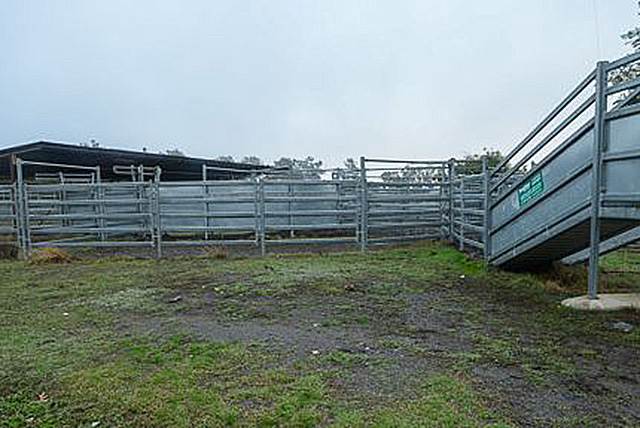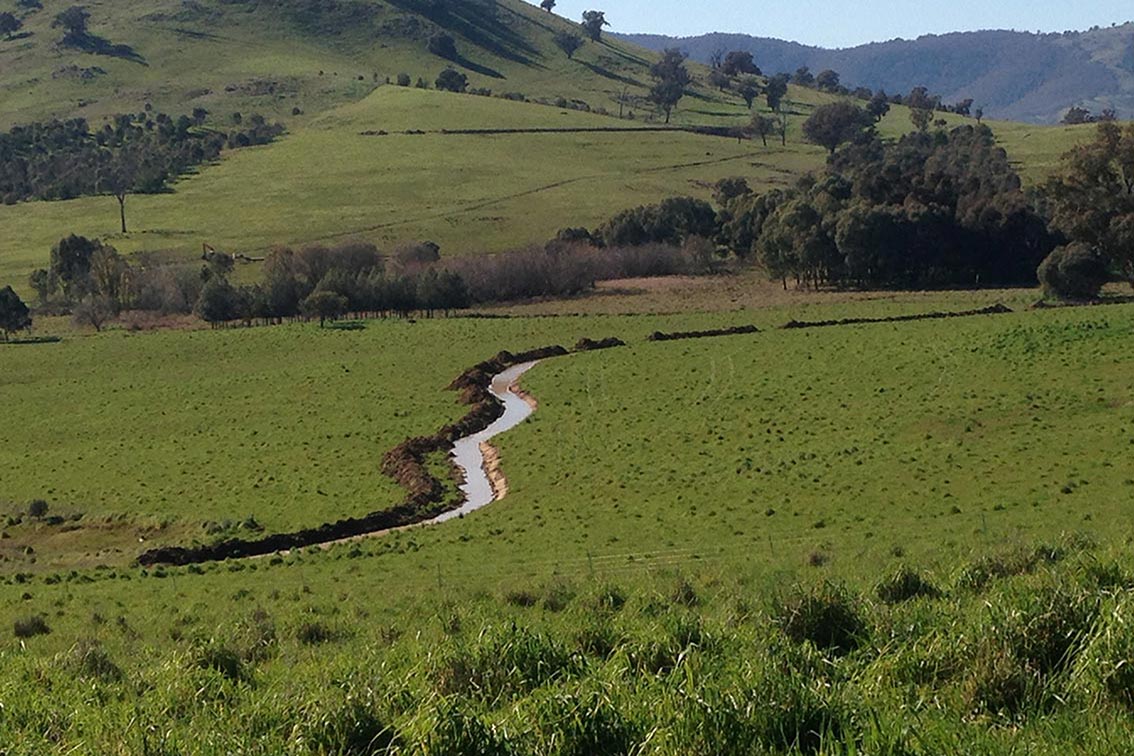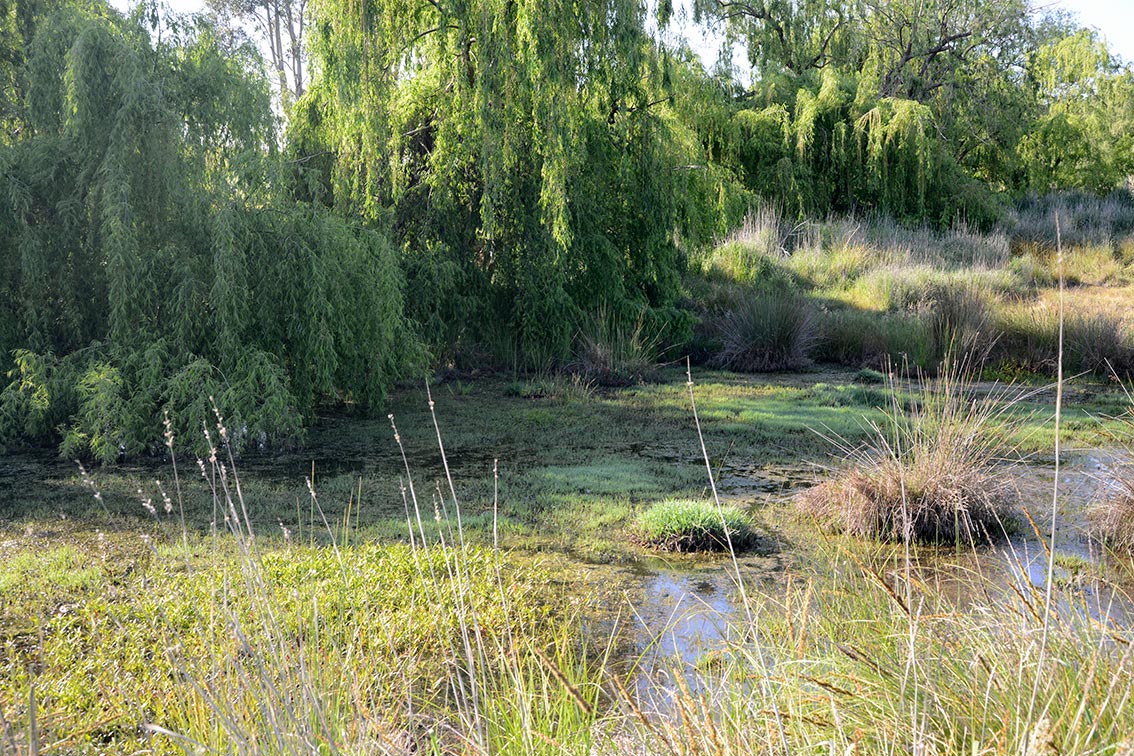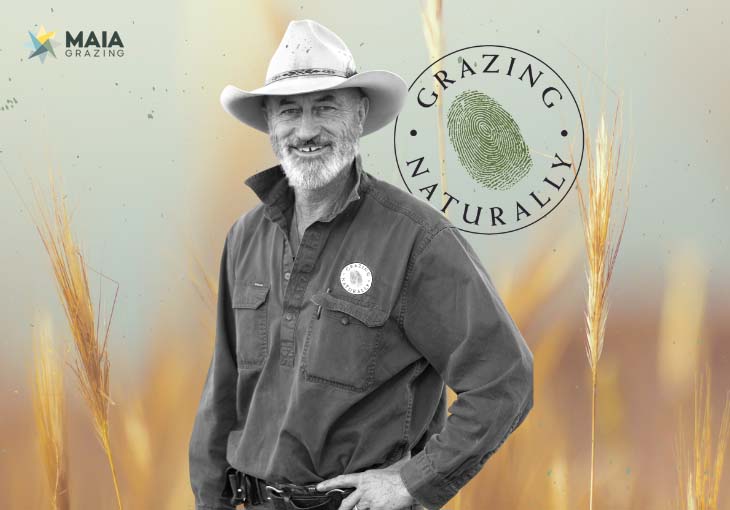How we began
Since purchasing Bibbaringa in 2007 over 70,000 trees have been planted, 100% ground cover have been achieved all year every year, and the water cycle has improved, along with plant diversity and soil microbiology health.
By applying the principals of Holistic Management, Natural Sequence Farming, Bio dynamics and education about the best ecological land practices and working with nature and the climatic conditions. Bibbaringa is now a functioning landscape. We watch the improvements each year despite variable climatic conditions.
Read more about how Carbon and organic levels are increasing and how water moves slowly through the landscape towards the Murray River.
Our Management Strategies
- Manage land according to actual rainfall.
- Utilise rainfall effectively by retaining good ground cover on the land.
- Increasing biodiversity by retaining ground cover throughout the year and building organic matter and carbon in the soil profile.
- Improving woody vegetation on land area by natural regeneration and tree shrub and grass planting programmes.
- Create an environment that encourages perennial grasslands both native and improved species.
- Planned grazing management. Fully recorded and planned according to actual grazing days per ha relative to pasture availability and rainfall consideration. All records are recorded on Maiagrazing program.
- Grazing animals have an important role in our management practices.
- Reduce inputs and best land management practice by reducing inputs and working with in the boundary of effective rainfall, changing season and grazing conditions.
- Make your rural business more rewarding.

Climate Champion
The Climate Champion Programme was a government programme aimed to help farmers manage climate risk by:
- Giving farmers the best climate tools, products, practices and seasonal outlooks, and an understanding of how they might use that in their farm business
- Giving climate researchers a chance to interact with farmers and get feedback about what regions and industries need from research.
40 Australian farmers from around Australia, representing most major agricultural commodities, took part in the program. Gillian has been a Climate Champion since 2010.
The program was a finalist in the Banksia Sustainability Awards for Leadership in Citizenship and Communities. It was also a runner-up for the 2011 Eureka Prize for Advancement of Climate Change Knowledge.
Gillian Sanbrook
See what Gillian has to say about
Season to season, around October/November, March/April, I usually make some pretty big decisions.
The last 12 months [from May 2016] have been quite low in rainfall. We also had a very long and very hot summer. So I’ve been reducing my stock numbers because of the seasonal conditions and the amount of grass I had in front of me.
In April [2016], I still had a month’s feed for the cattle. I’d already off-loaded 150 in February, so I had another 400 head in one mob.
I had a couple of options: I could’ve sold the lot; I could’ve sold all the weaners or sold all the cows, one or the other; or I could’ve bought in hay – I would have had to involve neighbours in that, because I have very little machinery.
The seasonal forecast outlook from Andrew Watkins at the Bureau [of Meteorology] was for a late autumn/early winter rain, which could be May, and it also gets colder then. This meant my ground cover would struggle to recuperate if I grazed it down.
About three weeks ago [late April, 2016] I went for a drive, and I thought, ‘I’m not sure I’m making the right decision in keeping these cattle’.
So I sold all my cattle. They’re all gone. I’ve totally destocked.
And that’s really unusual to do in this region.

Empty cattle yards – another rare sight in this region, but a decision that Gillian says she is happy with.
Ground cover is (still) supreme
I took the high prices and got out of breeding stock.
Now I’ll put my money into making grass, then I’ll be early back into the market and, probably for the next year or so, until the property builds up again, I’ll buy in a few of the weaners and fatten them up – in at 350 kilograms and I will get them up to 450 kilograms – and sell them off.
Ground cover is supreme. The property still has really good cover on it. I could have kept grazing – I had the month in front of me, until the end of May [2016]. But once you get rain it still takes time to grow grass. I felt that after that, when it got cold in June, it would be too slow a recovery. I value my ground cover, so I made the decision.
As we stand, it looks good. It should recover quickly once we get some warmth and rain.

Gillian made the decision to stop grazing, to allow her grass to recover.
Being in tune with nature
Even though I was not brought up on the land, I always had an affinity with it. As soon as I left school I became a jillaroo. In the early 1970s, I was the only jillaroo in the Riverina.
Before we bought Bibbaringa, we owned and operated Pooginook Merino stud in the Riverina region.
In 1992, we started managing Pooginook holistically. We started in a drought and continued to refine the process of holistic management.
When you’re on the land you become very attuned with nature. You notice when birds are coming and going, what the insects are doing and how it all relates to impending weather. Your projections aren’t always right, but they often give you a good head start to make management changes.
So we’ve just built on what our forefathers have taught us, and the knowledge that we’ve accumulated over the years. We try to be seen as leaders in land management in whatever climatic conditions we are in.
Watch: Building a ground cover blanket for resilience
Holistic management for ease of mind
Sometimes you do get ridiculed in the community when you make a decision like destocking entirely. People say, ‘She’s rushed, she’s panicked, she just has to wait another few weeks and it’ll be alright’. But I think that’s just because people don’t yet understand my intentions with what I want to do with this property. Or I don’t understand what they want to do with theirs, perhaps!
I’m still very much committed to running this property holistically.
Decision-making is the biggest thing in holistic management. With the decision-making process for destocking, I went through the seven testing questions [see below] and did all the gross margins and thought, ‘How do I feel about this?’ And it came up with a big tick for that decision. So I’m really confident that the seasonal outlook along with holistic management let me make that decision soundly and confidently.

Sharing farming practices with researchers and fellow farm and land managers.
The seven testing questions
- Cause and effect: Does this action address the root cause of the problem, or merely a symptom?
- Sustainability: If you take this action, will it lead toward or away from the future resource base described in your holistic goal?
- Weak link:
-
- Social: If you take this action, will you encounter or create a blockage to progress?
- Biological: Does this action address the weakest point in the life cycle of the organism you’re trying to control or promote?
- Financial: Does this action strengthen the weakest link in the chain of production?
- Energy/money source & use: Is the energy or money to be used in this action derived from the most appropriate source in terms of your holistic goal? Will the way in which energy or money is to be used lead toward your holistic goal?
- Society & culture: How do you feel about this action now? Will it lead to the quality of life you desire? Will it adversely affect the lives of others?
- Marginal reaction: Is there another action that could provide greater return, in terms of your holistic goal, for the time and money spent?
- Gross profit analysis: Which enterprise contributes more to covering the overheads of the business? (Use this test when comparing two or more enterprises.)
Source: managingwholes.com

A rare mist hung heavily on the day of the visit to Gillian’s farm, ‘Bibbaringa’.
Protecting ground cover by rotating cattle
I’ve got 60 paddocks now, having started with just 24.
I have all my cattle on one paddock at a time. Sometimes it is two days in one paddock, five in the next, depending on the size of the paddock. It’s all calculated – I do my DSEs (dry sheep equivalent), or animal grazing days per hectare. I then record it all on a grazing sheet for the historical record.
Hotter, more variable climate means more risk to pasture growth
Certainly the temperatures appear to be getting higher.
The temperatures in the winter have been higher. Spring rains have been non-existent – very much hit and miss. There was low rainfall over last spring (2015), so we didn’t get the bulk of feed over spring.
This year we had some rainfall in January, but it was really just enough to get some hairy panic grass to come up, where normally with the summer rain you get some really good growth from the summer perennials. But that didn’t really happen this year [2016], because there wasn’t much moisture in the soil profile from the spring, and because of the temperatures.
There weren’t the high forties temperatures this year, but there were consistent over-thirty degree days.
It’s so easy to get locked into the old English way of farming. But we have so little moisture in our soil profile, and the temperatures are only getting higher.
I’m not even convinced this property is made for breeding stock 24/7. I think in this high rainfall area of southern New South Wales, with climate change, there’s definitely not the predictability in the seasons there used to be, and that means you have to change your management practice.
My major priority is not production at all costs. But I do want to run a profitable farming operation. My major priority is getting the soil and the land into a good, healthy condition. I feel if I can do this then everything else will take care of itself and, in turn, accommodate for the varying climate.
Trees and cattle are a good combination
Two days after we settled on the property [January 2007], we sat around an aerial map and started to plan how we wanted the property to look. We had two goals in mind: to segment the large paddocks and to plant trees.
The trees and shrubs we’ve planted have allowed for more moisture retention and help shade our animals during very hot days.
With the help of the Murray Catchment Management Authority, we had over 24 per cent of our property planted to trees by 2013, and we’ve increased it by about 5 hectares each year since then. Some people say that we are sacrificing land, but we’ve started grazing in these native vegetation areas again.
We believe it’s important to run animals through native vegetation areas, as they have a role to play in maintaining the balance of the system.
They stimulate soil surface with their hooves and prune the trees and shrubs. The secret is not to leave them in too long or introduce them too often.
In the early years we did not graze for 4-5 years, then let them lightly graze once a year. Now most of the original tree areas are in the grazing plan.
Keeping water on the property by slowing it down
When we first started planting trees on this property, we focused on restoring fragile gully areas to help with erosion. During high rainfall events, rainfall was just gushing down the hills, taking a lot of dirt and rock with it. This was because there was little ground cover to slow down the water or hold the soil in place.
To keep water on the property, the idea is to slow the flow of the water through the landscape. By having the ground cover, the trees and the fencing, we’ve been able to do that.
I’ve been doing on-ground works for three years: putting dams in, rerouting overflows and creating contours, so you get this natural irrigation process happening throughout the landscape.
That’s based on natural sequence farming principles by Peter Andrews. And I’m just about to start some more work on that now.
I’ve also been practising what he says on this property anyway. Nature does a lot of healing by itself if you allow it to.

Creating contours slows the flow of water through the property, making for a natural irrigation process.
Latest articles
Keep up with our latest news.
Grazing and Cultural Burning field day
Grazing and Cultural Burning field day Listening to the [...]
New Farm Next Door Podcasts
Audio recordings from NEW FARM NEXT DOOR Regenerating farmscapes. [...]
Earth Canvas New Farm Next Door
New Farm Next Door was a forum instigated by Earth [...]



















